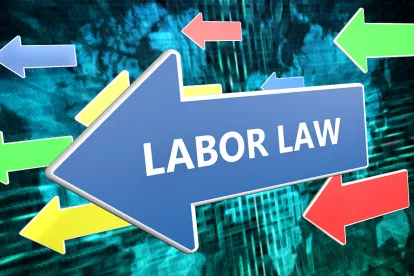On October 13, 2022, the U.S. Department of Labor (“DOL”) published its proposed rule regarding the classification of employees and independent contractors under the Fair Labor Standards Act (“FLSA”) in an attempt to resolve inconsistent analyses amongst the Federal Courts of Appeals. The proposed rule would return to a totality-of-the-circumstances analysis of the “Economic Reality Test” (with a few modifications), which would have the effect of making it more difficult to classify workers as independent contractors.
In May 2021, the DOL withdrew the Trump-Era Independent Contractor Rule, which created tiered factors in the classification analysis. The first tier, which contained two “core” factors—the worker’s nature and degree of control and the worker’s opportunity for profit and loss—was outcome-determinative and most probative in the analysis. The second tier contained three “non-core” factors: (1) the skill required for the job; (2) the degree of permanence of the working relationship between the worker and employer; and (3) whether the work was part of an integrated unit of production. Alone, it was “highly unlikely” that these three non-core factors could skew the analysis in favor of one classification, commonly to that of an “employee.”
The DOL’s proposed rule would make it more difficult to classify workers as independent contractors by returning to a “totality-of-the-circumstances” analysis under the “Economic Reality Test.” Specifically, the factors previously mentioned (and a new, sixth factor considering “consideration of investment”[1]) would no longer fall under the Trump-era two-tiered analysis. Instead, all six factors would carry the same weight. Additionally, the DOL’s proposed rule would clarify and expand on existing factors by:
-
Providing additional analysis of the “control” factor by including detailed discussions of how scheduling, supervision, price-setting, and the ability to work for others should be considered; and
-
Returning to the “longstanding” interpretation of the “integral” factor by expanding the analysis to whether the work is integral to the employer’s business, rather than an integrated unit of production.
The DOL justifies the proposed rule change as a protection-mechanism for workers, stating that the previous approach tended to “increase the risk of misclassification of employees as independent contractors.” And the DOL wants, at all costs, to “protect” workers who, if classified as independent contractors, are not eligible to receive minimum wages and overtime pay, and they are not provided with unemployment insurance or other employee benefits.
The proposed rule is not yet final—the DOL is accepting comments concerning the rule until November 28, 2022. Additionally, a worker’s classification may be different under the FLSA than it is under various state laws, the National Labor Relations Act and/or the Internal Revenue Code. Therefore, employers should continue to take steps to ensure proper classification of their workers, and remain cognizant of and comply with applicable state and local laws, which may be different than federal law. Should you have any questions concerning these issues, employers should consult counsel for assistance.
*Alexandria Amerine, a law clerk in the firm’s Dallas office, also contributed to this article.
FOOTNOTES
[1] The DOL’s sixth factor, consideration of investment, would consider whether a worker’s investment is capital or entrepreneurial in nature. It would also consider the worker’s investments on a relative basis with the employer’s investment.



 />i
/>i
